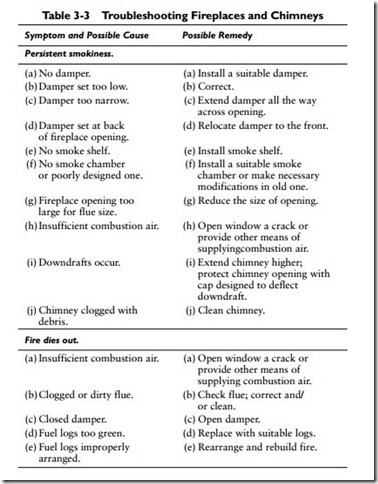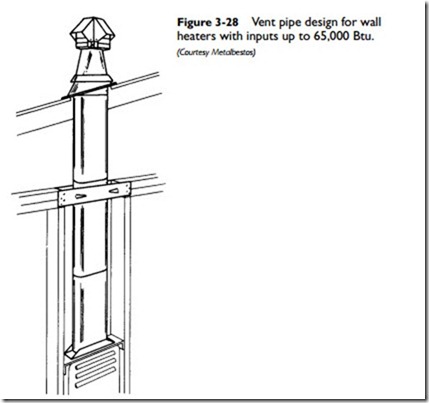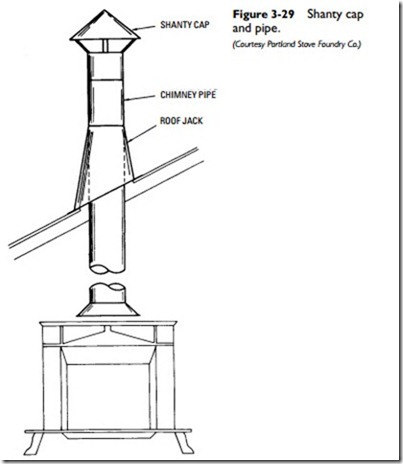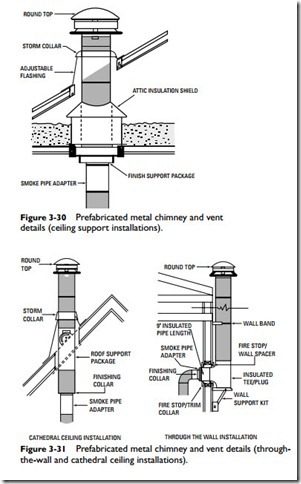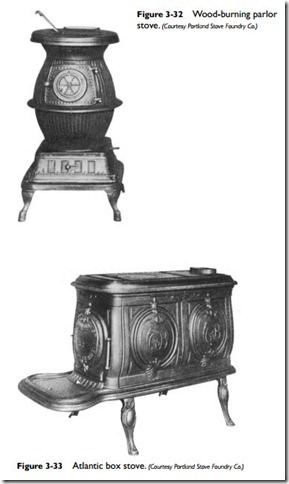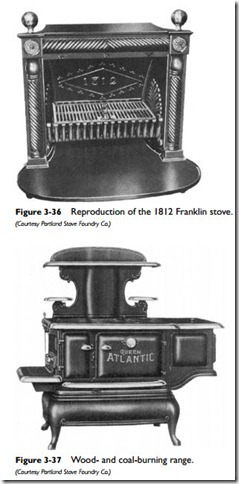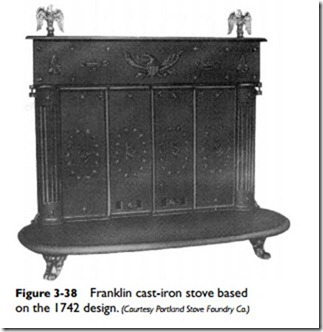Troubleshooting Fireplaces and Chimneys
Table 3-3 lists the most common problems associated with the operation of a fireplace.
Stoves, Ranges, and Heaters
A stove is a device used for heating or for both heating and cooking purposes (see Figures 3-32 and 3-33). Heating is generally regarded
standards because it had no grates. Benjamin Franklin revolutionized the design of the stove with the introduction in 1742 of the model that bears his name (see Figure 3-34).
Sometimes the terms stove and range are used synonymously. This confusion, or blurring of the differences between the two, probably results from the incorporation of such features as an oven, cooking surface, and hot-water tank in the design of the stove (see Figures 3-35 through 3-38).
A range is a cooking surface and an oven combined in a single unit. It differs from a stove by being specifically designed for cooking, although it can supply a certain amount of warmth to the kitchen.
Ranges can be divided into a number of different categories depending on the type of fuel used. There are four basic categories of ranges:
1. Gas ranges
2. Electric ranges
3. Kerosene ranges
4. Solid-fuel ranges
Gas ranges use both natural and manufactured gases. Kerosene ranges have been further developed to use either gasoline or fuel oil. The solid fuels used in ranges include wood, charcoal, coal (lignite, bituminous, anthracite), and coke.
The range shown in Figure 3-39 uses wood, coal, or oil. The fuel grates and ashes (from the ashpit) are removed through the front of the range. These ranges also contain a large removable copper tank, which is used to supply hot water for cooking and other purposes.
A wood heater is a device used specifically to provide heat to a room or a similarly limited space. These are wood-burning units that can also be equipped to burn coal, oil, or gas. These heaters are similar to stoves in their operating principle. They should not be confused with unit (space) heaters, which are suspended from ceil- ings or walls and operate on a completely different principle (see Chapter 2, “Radiators, Convectors, and Unit Heaters”).
Some wood-burning stoves are equipped with a thermostat. The thermostat consists of a bimetallic helix coil that opens and closes a damper in response to temperature changes. The damper opens just enough to admit precisely the amount of combustion air necessary to maintain the heat at a comfortable level.
A mat or floor protector made of some sort of fireproof material should be placed under a stove, range, or heater to protect the floor or floor covering against live sparks or hot ashes. These units should also be placed as far from a wall or partition as is necessary to prevent heat damage.
